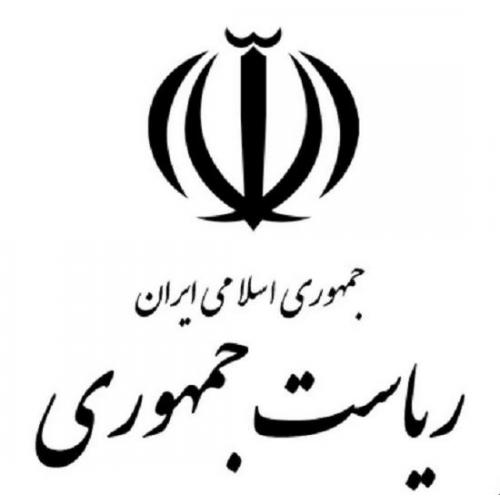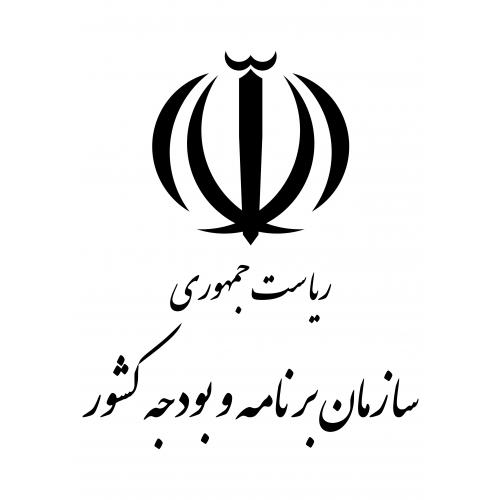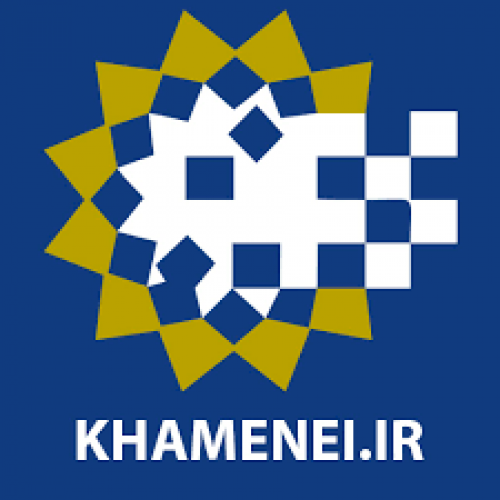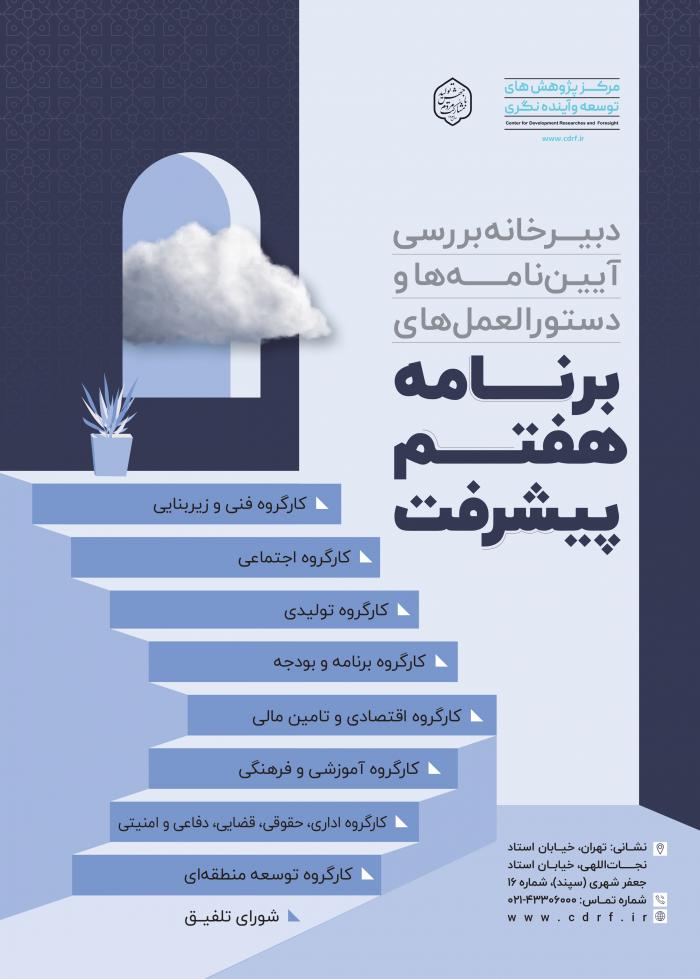
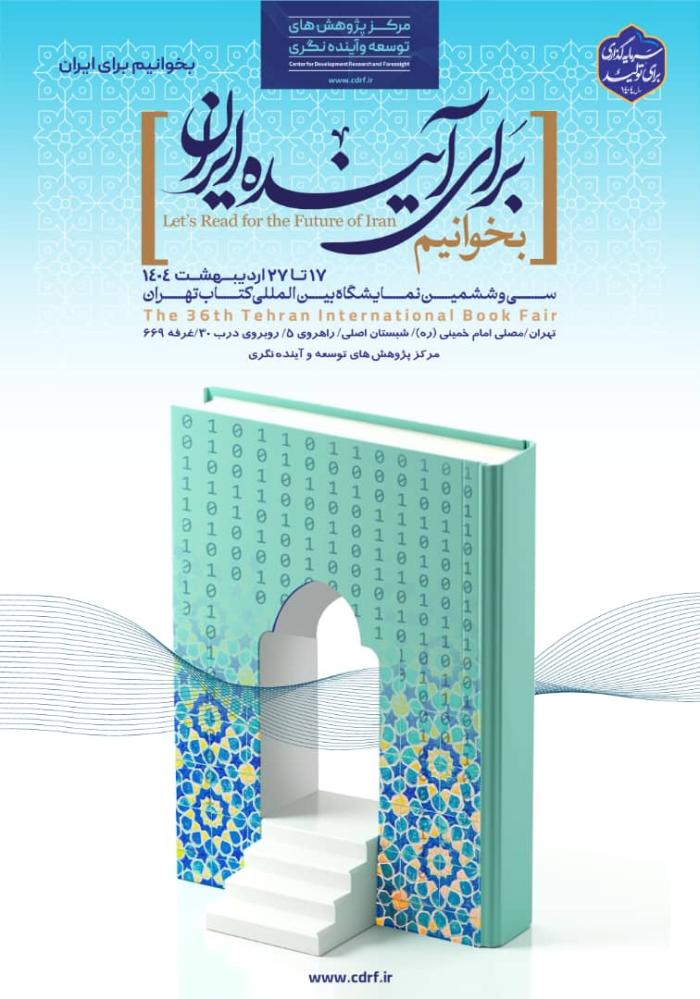
-
بررسی آییننامهها و دستورالعملهای برنامه هفتم پیشرفت
-
بررسی عوامل موثر بر افزایش تصادفات و تلفات جادهای و سوانح رانندگی و دادهکاوی تلفات انسانی
-
سازماندهی و بازآرایی فضایی آموزش عالی کشور
-
به روز رسانی سند ملی آمایش سرزمین
-
انجام مطالعات مناطق آزاد به عنوان نواحی پیشران اقتصادی کشور
-
اصلاح ساختار بودجه و پیاده سازی نظام یکپارچه مدیریت اطلاعات مالی دولت (IFMIS)
.jpg)
The scientific conference on "The Role of Balancing Production and Consumption of Agricultural Products in Controlling Inflation" was held recently, with the presence of Dr. Mojtaba Palooch, the Deputy Director of the Institute for Planning , Agricultural Economics, and Rural Development of the Ministry of Agriculture as the scientific director, Dr. Gholamhossein Aghaya, the advisor to the Minister of Agriculture in Planning and Agricultural Development, and Dr. Qasem Mohammadi, the former MP and former CEO of Keshavarz and Sanaat-e-Moghan.
In his opening remarks, Dr. Palooch explained the history of the emergence of the concept of inflation, noting that it dates back to the nineteenth century in Europe. He stated that inflation is a European phenomenon that arose when European governments printed money to cover war costs, leading to inflation. Dr. Palooch also emphasized the importance of food security and self-sufficiency in ensuring healthy food for the population. He noted that before the revolution, Iran's agricultural sector produced a total of 25 million tons of food, but this figure has now reached 125 million tons. He also highlighted the extensive measures that have been taken to increase production in various areas, such as fish production, which has increased from less than 50 thousand tons before the revolution to over 1.2 million tons today. He added that there is a plan to increase production to 1.8 million tons under the Seventh Plan, but warned that climate change is a major challenge that must be addressed.
Dr. Palooch shed light on the importance of food consumption patterns, noting that people's food consumption is influenced by a variety of factors, including income and advertising. He also pointed out that the World Bank publishes a report on food inflation every two weeks, and that these reports show that rising food prices are a global phenomenon. However, he stressed that this global issue has been exacerbated in Iran by economic problems. Nevertheless, he expressed confidence that this phenomenon can be overcome with proper management. Dr. Aghaya noted that the agricultural sector has achieved an average cumulative growth rate of 29% in recent years, which has put it ahead of the oil and industrial sectors. However, he expressed concern about the lack of investment in the agricultural sector. He warned that if investment in the sector does not increase, the current growth will lead to the depletion of natural resources, which is a major issue that requires planning.
The advisor to the Minister of Agriculture in planning and agricultural development discussed the importance of supply chain management in the agricultural sector. He noted that the purchase of more than 10 million tons of wheat in the country this year, as well as predictions for next year, indicate a positive trend for production. He also expressed optimism about wheat production in the coming year, based on weather models and other evaluation models that examine precipitation conditions, soil moisture, and dam conditions. Dr. Aghaya also emphasized the importance of producer subsidies, arguing that they are more important than consumer subsidies in controlling inflation. He warned that prices should not rise rapidly and fall slowly, as this can lead to the elimination of producers who experience fluctuations. He also highlighted the government's goal of hatching 130 million chicks per month, which has been successfully achieved. However, he stressed the need for the government to intervene in the purchase of chickens to prevent prices from falling.
As the last speaker, Dr. Qasem Mohammadi, a former member of the Agriculture Commission of the Parliament, emphasized the importance of developing a complete production chain for agricultural products and highlighted the water issue as a key concern. He criticized incomplete investments in agricultural towns, which have not yet reached the production and utilization stage, and which he argued have contributed to inflation.
Dr. Mohammadi, in his concluding remarks, discussed cost reduction models for the agricultural sector and called for the presence of experts in production fields and support for farmers. He also stressed the need to reform bureaucratic systems to solve agricultural problems. He argued that agriculture is a high-risk sector, and therefore deserves special attention.

